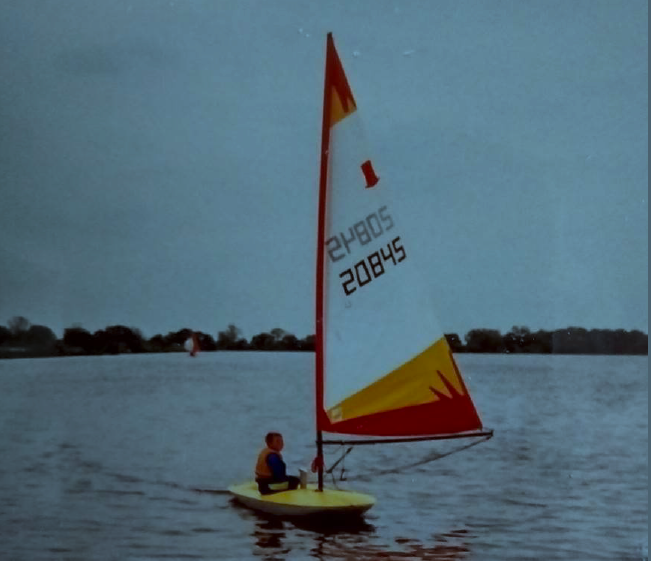The African Dhow built from recycled flip flops and inspired by the Topper Learn to Dream project

Simon Benson sailing his first Topper 'Mr Flibble' at Beaver Sailing Club in 1992, his inspiration for a career in sustainable naval architecture.
Dr Simon Benson, a keen Topper sailor in his youth who went on to study naval architecture at Newcastle University, got in touch to tell us about his recent work designing a traditional African Dhow, built from recycled plastic. Simon's inspiration to create a sustainable sailing dhow, traditionally rigged and made entirely from recycled plastic planks and beams, came from his Topper sailing experience as a 9-year-old boy.
The first dhow built, Flipflopi Ndogo had sailed around the Lamu Archipelago, then to Zanzibar, and later trucked overland to Lake Victoria, where it then circumnavigated the lake, stopping in many towns and villages in Uganda, Tanzania, and Kenya. The hull was clad in 30,000 flip-flops, remade into a patchwork matting, giving the boat its name, its striking look and a very comfortable deck for bare feet! Everywhere Flipflopi docked, the team ran events, campaigns, school visits and litter picks. This was part of a large-scale campaign by Flipflopi, along with many partners, highlighting the plastic crisis - one that hits places like the East African coast especially hard, where the rapidly growing plastic waste, both washed in from the ocean and added to by domestic packaging and industry, blights ecosystems, communities, and economies. The campaign demands an end to single-use plastic, and that all other plastics are kept in use for as long as possible through repair, reuse, and recycling, instead of treating them as disposable, creating a circular economy.

The original Flipflopi Ndogo sailing from Lamu to Zanzibar
Simon has now been asked to design a larger Dhow, 20 meters long and built from 70 tonnes of recycled plastic, the project all inspired by his childhood sailing in the recyclable Topper. The project has created a whole industry of recycling waste plastics into high-value products – beautiful ornaments, carved furniture, civic infrastructure, and traditionally built boats. Manufacturing uses a combination of heritage techniques handed down over centuries, with high technology innovations such as plastic welding. By creating durable products with high value, Flipflopi shows that plastic can be a precious material that can also be used to rejuvenate skilled crafts such as carpentry, carving and boatbuilding. Flipflopi is also a pioneer of inclusion and gender equality in an industry traditionally only open to men.
›
Boatbuilder Nuru, welding and sealing planks on the Flipflopi taxi dhow
Simon now wants to start a Learn to Dream centre in Lamu, Kenya, to provide reactivated Topers for the local boat builders and their families to learn to sail on the boat that inspired their new industry, the recyclable Topper.
Read his full story here.
Subscribe to our newsletter
News, events, & coaching tips from around the world.